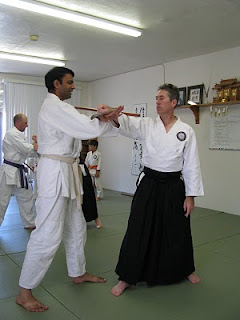Great news! Otsuka Yasuyuki Sensei of Japan has joined the SMAA. Otsuka Sensei is the current headmaster (soke) of Meifu-Shinkage Ryu, a system focusing on ancient samurai weapons. In particular, throwing stars and darts (shuriken) and the weighted chain are featured in this ryu. Otsuka Soke is now a member of the SMAA Board of Advisors.
Otsuka Soke is the creator of Japanese language books and DVDs on this art, and he's widely known in Japan as being one of only a handful of people left that practice shuriken-jutsu. Otsuka Soke is one of Japan's top martial artists, and his presence in the SMAA indicates the value teachers in Japan place on this association. He is one of several revered Japanese sensei that are members of the SMAA.
You can also be a member of this elite association. Join today at www.smaa-hq.com.

































